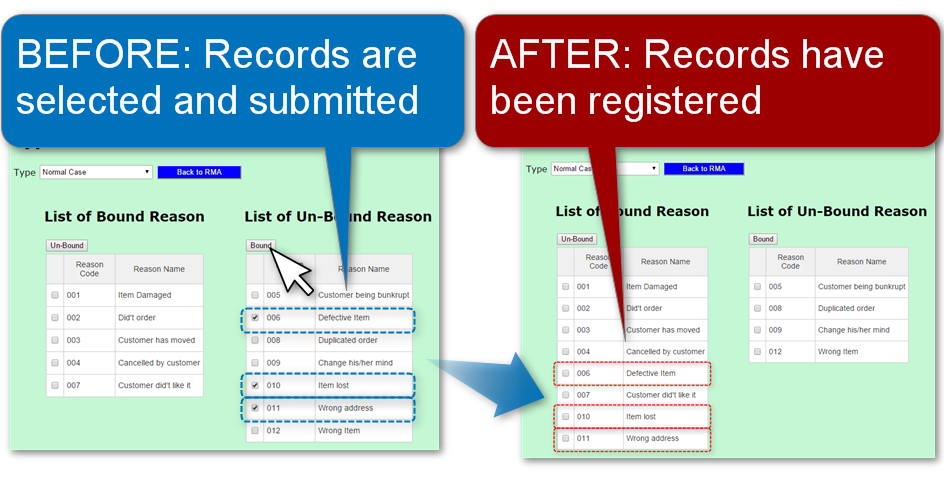
This is based on this section:
In controller method, it creates a relation ship between RTRN_TP and RTRN_RSN
1. RTRN_RSN object set to HashSet
2. RTRN_TP object is saved

RTRN_RSN of “006”, “010”, and “011” have been bound to RTRN_TP of “01”

@RequestMapping(value = "/cUrlValAttrbSubTpRsn01Jsp", params = "toUnBoundRsnList", method = RequestMethod.POST)
public ModelAndView toUnBoundRsnList(@ModelAttribute("RtrnTpModel") RtrnTpModel tp, ModelMap model, HttpServletRequest req) {
String tpSelected = (String) req.getSession().getAttribute(CONST.TP_SELECTED.getVal());
if (CommonBL.hasValue(tpSelected)) {
List<String> selectedCheckBox = tp.getSelectedCheckBox();
if (!CommonBL.isEmpty(selectedCheckBox)) {
for (String code : selectedCheckBox) {
RTRN_TP_RSN_CMBN tpRsnObj = this.tpRsnSvc.getTpRsnCmbnByHql(tpSelected, code);
if (tpRsnObj != null) {
this.tpRsnSvc.delete(tpRsnObj);
}
}
}
}
return getMVSubTpRsn01(model, req);
}
Unlike adding the relationship, to delete (un-bound) the relationship, it’s directly deleting the Join Table (RTRN_TP_RSN_CMBN)
